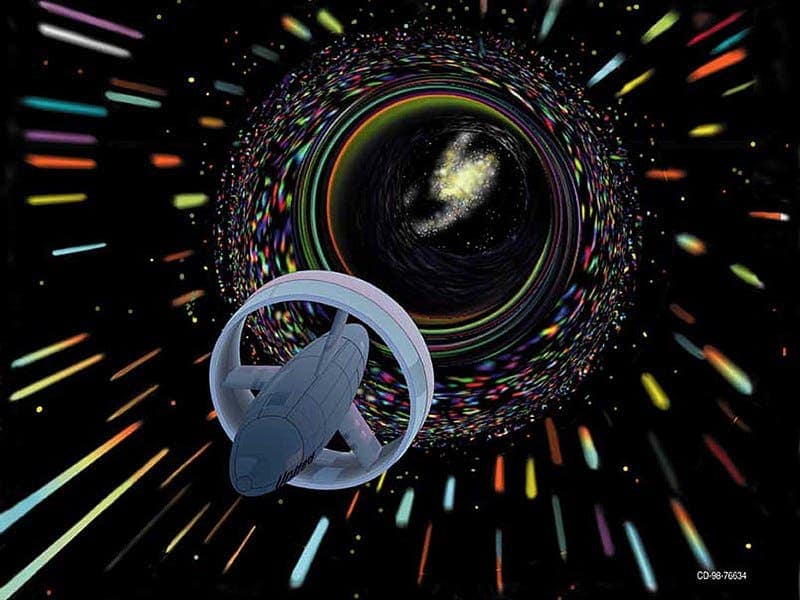Scientists have often turned to fiction for inspiration about what secrets of nature they could unlock. Some of the most outlandish science fiction concepts include teleportation and warp drive, both of which have been traditionally frowned upon because they would break the laws of physics — or so we thought. A new study found that, at least in the case of warp drives, faster-than-light-travel may be possible by taking advantage of a ‘loop hole’ in general relativity.

Warp drives may work, seriously
The concept for the Star Trek-inspired warp-drive is simple to grasp. Everything within space is restricted by the speed of light, but the really cool thing is space-time, the fabric of space, is not limited by the speed of light. As the name suggests, a warp drive involves warping spacetime itself around an object.
The most widely used theoretical framework for a warp drive was proposed by Mexican physicist Miguel Alcubierre in 1994. In order to allow faster-than-light-travel, Alcubierre envisioned catapulting a spaceship in a bubble of negative energy that would expand space and time behind the ship, while at the same time compressing space-time in front of it.
In the theory of general relativity, we usually assume that the energy is greater than zero, at all times and everywhere in the universe. This has a very important consequence for gravity: energy (e) is linked to mass via the formula e=mc² (with m being the mass and c the speed of light). So negative energy would consequently also imply negative mass. Positive masses attract each other, but with a negative mass, gravity could suddenly become a repulsive force.
This is where things get interesting. Quantum theory does allow negative energy. According to quantum physics, it is possible to borrow energy from a vacuum at a certain location, like money from a bank. This would theoretically open the door for negative mass and negative gravity.
But that’s easier said than done. Due to its requirements for negative energy, many believe that warp drives are not physically possible.
“This, however, is no longer correct,” said Alexey Bobrick, scientist and astrophysicist at Lund University.
A different loophole
Bobrick and colleagues went for a different route with their research, describing a new class of warp drives that respects general relativity and doesn’t require negative energy.
The researchers in Sweden, part of an independent group of scientists known as Applied Physics, worked closely with distinguished researchers in warp field mechanics and even received the blessings of Alcubierre, the godfather of warp drive.
Writing in the journal Classical and Quantum Gravity, the authors said that “any warp drive, including the Alcubierre drive, is a shell of regular or exotic material moving inertially with a certain velocity.” Mathematically, they then go on to show that “a class of subluminal, spherically symmetric warp drive spacetimes, at least in principle, can be constructed based on the physical principles known to humanity today.”
If that sounds hard to understand, well, it kind of is. But fear not! Sabine Hossenfelder, Professor and Research Fellow at the Frankfurt Institute for Advanced Studies, break down this study in a recent YouTube video, which you can watch below.
One problem though: even if the theory is reliable, no one really knows how to actually do this yet. For the time being, warp drives remain in the realm of theory, but this research provides new perspectives on how to achieve faster-than-light travel. At least, the concept doesn’t sound like such a crazy idea anymore.









